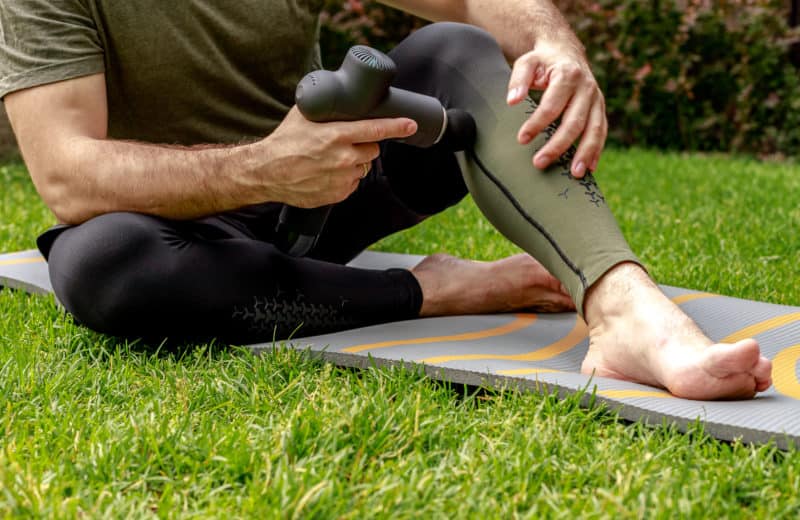Just how sore or tense are your muscles and problem areas? How often is your neck so tight that it feels like it’s about to snap? Or is it so stiff that you can barely turn your head?
Muscle soreness is a daily part of our lives, and whether we’re aware of it or not, this problem affects us on many levels. A good massage, however, can be a huge source of relief, especially for those struggling with medical conditions like carpal tunnel syndrome or arthritis.
The good news is that you don’t need to see a massage therapist to get those benefits. Self-massage, when done right, can be super effective. Plus the added benefit is that you can do it from the comfort of your own home!
If you’d like to try self-massage, keep reading to find out the best methods to improve your health.
How often should you self massage?
According to a survey conducted by the American Massage Therapy Association of people who had at least one massage in the last five years, 30 percent report that they did so for reasons of pain management, injury rehabilitation, migraine control, or overall wellness. Rather than waiting for the pain to take over, you can practice using self-massage techniques on a daily basis. But, how often should you self-massage, and will it be worth your time and effort in the long run?
First, let’s take a look at a number of benefits self-massage can bring:
- Stress and pain reduction
- Lower blood pressure
- Deep muscle and tissue relaxation
- Increased energy and flexibility
- Improved circulation
- Reduction of swelling and inflammation
While a single self-massage can make you feel rejuvenated, that feeling probably won’t be permanent. In order to fully reap the rewards, regular self-massage treatments are a must.
Massage frequency and duration will depend on the type of massage and the area you want to target. For example, massages for injury are typically more frequent, while massages for relaxation are needed less often. A general rule of thumb states that a 10-15 minute massage a day is all you need to help alleviate pain and tension. You start by massaging slowly while focusing on muscle trigger points for about 30-60 seconds. It’s normal for muscle trigger points to be quite sore and tender afterward. This soreness should resolve itself within 24 hours. Know that applying just a little pressure, not too much, for extended amounts of time can often help tissues release more effectively. When your body starts to feel stiff or sore, you know it’s time for a massage again.
The more you practice self-massage, the more these benefits will start to accumulate. But is there such a thing as too many massages? Actually, yes. The best solution is to listen to your body’s needs and respond accordingly. Once a week is the most you should go, unless you are dealing with severe pain. You can work the whole body or just your problem areas. If your muscles are already inflamed, overdoing your massage will only worsen your condition and prevent recovery in the long run.
How should you self massage?
Many self-massage techniques can be performed with a variety of tools. Some are performed with just your fingers, hands, and elbows, while others require simple items like tennis balls or foam rollers. Your hands are the simplest tool for self-massage and using fists, thumbs, and elbows on your tougher trigger points can give you relief almost immediately.
When self-massaging with your hands, it’s best that you massage for a few moments first to get your body used to the sensation. Then you start exploring the muscles in the area you feel pain until you reach those specific spots. Pressure-wise, go with light strokes and slowly work your way up. Gently stretch things out after a self-massage treatment.
Massaging by hand is an excellent therapy that has proven useful for thousands of years. However, we now have the option of performing massages using tools. The market for self-massage tools has grown in size and popularity during recent years. There’s one tool, in particular, that’s all the rage: a massage gun. This handy device has proven to be quite effective in dealing with sore muscles. It gives you that feeling of having a personal massage therapist always by your side. Plus, you will spend less time and get more results from your self-massage. Who wouldn’t want that?

In short, a massage gun is a small device that provides rapid bursts of force into your muscle tissue, accelerating your post-workout recovery. If used correctly, this tool has loads of benefits:
- Relieves muscle soreness and stiffness
- Activates the nervous system
- Stimulates the flush of lactic acid and other toxins
- Improves overall mobility and enhances range of motion
On the other hand, improper use or overuse of a massage gun can lead to injury, sensitivity, and pain. Use it too little and you may not reap all the benefits. Avoid holding the gun in a static position for more than a few seconds. Rather move it around the desired area instead.
These electric tools also range in price. With so many gun massagers on the market, how do you find the right product for you? You may want to take a look at this handy guide if you’re looking for the best, most affordable massage gun that won’t break the bank. You will find some gems that don’t necessarily follow the “you get what you pay for” rule. Plus, you only buy your massage gun once, so the more you use it, the cheaper each massage gets.
Become your own masseuse
Unless you have a severe medical condition, self-massages are great for your overall health. You can always go with the tried and true method of using your hands. But if you want to get the most from your self-massage experience, a massage gun is going to give you the right boost and relieve pain without breaking the bank. Make sure you relax and indulge in all the benefits that self-massage has to offer!

